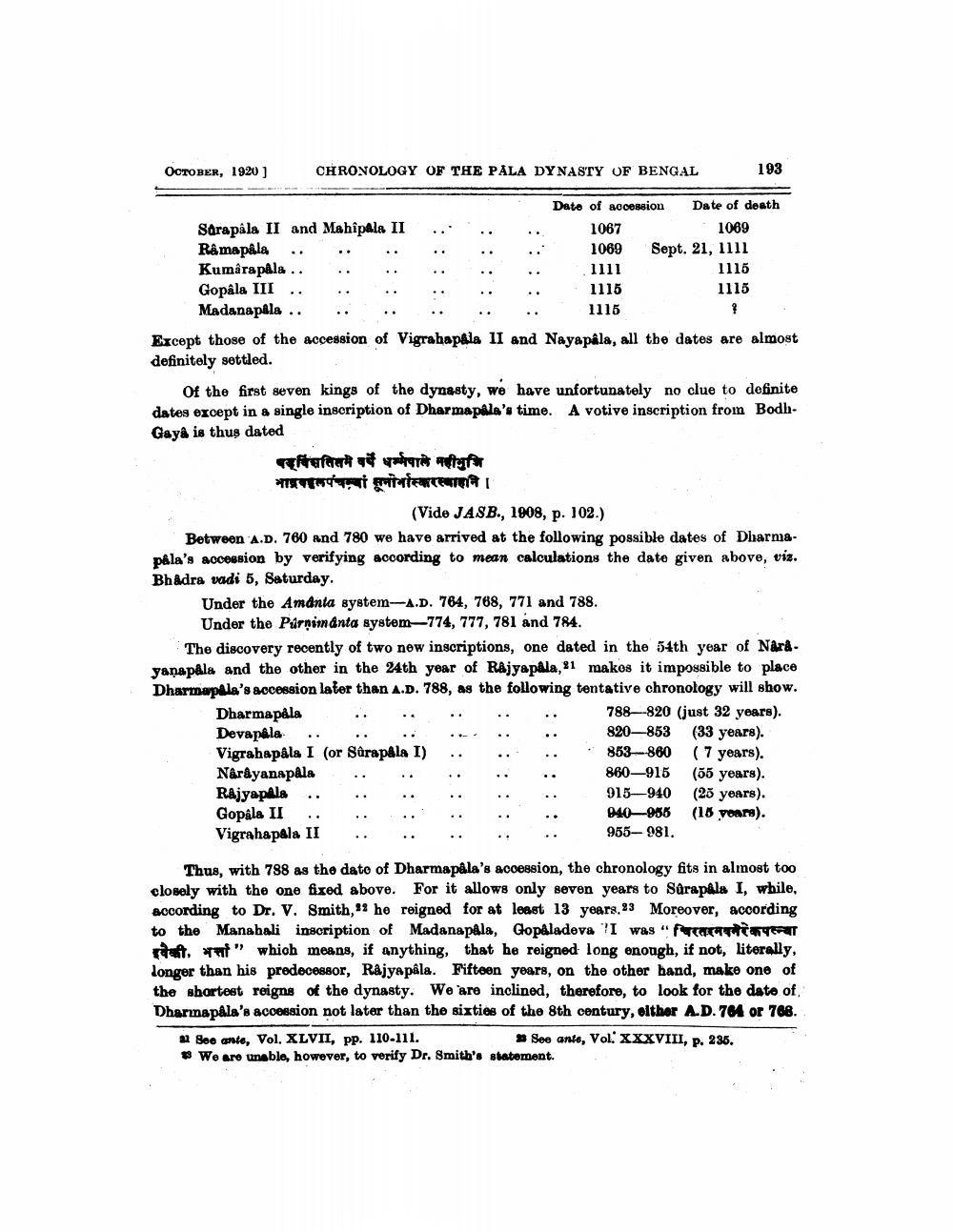________________
OCTOBER, 1920]
CHRONOLOGY OF THE PALA DYNASTY OF BENGAL
Sarapala II and Mahîpala II
Ramapala.. Kumarapala.. Gopala III
Madanapala..
aefteftak zit vakok mégfa www.primi grimiencenrest |
Except those of the accession of Vigrahapala II and Nayapala, all the dates are almost definitely settled.
Date of accession
1067
1069
1111
1115
1115
Of the first seven kings of the dynasty, we have unfortunately no clue to definite dates except in a single inscription of Dharmapala's time. A votive inscription from BodhGaya is thus dated
193
Date of death
1069
Sept. 21, 1111
1115 1115
?
Under the Amanta system-A.D. 764, 768, 771 and 788. Under the Purnimanta system-774, 777, 781 and 784.
(Vide JASB., 1908, p. 102.)
Between A.D. 760 and 780 we have arrived at the following possible dates of Dharmapala's accession by verifying according to mean calculations the date given above, viz. Bhadra vadi 5, Saturday.
Dharmapils Devapâla
Vigrahapala I (or Sûrapala I)
Narayanapala
Rajyapala
Gopala II Vigrahapala II
The discovery recently of two new inscriptions, one dated in the 54th year of Narayanapala and the other in the 24th year of Rajyapala, 21 makes it impossible to place Dharmapala's accession later than A.D. 788, as the following tentative chronology will show.
788-820 (just 32 years).
820-853
(33 years). 853----860 (7 years). 860-915 (55 years). 915-940 (25 years). 940-955 955-981.
(15 years).
Thus, with 788 as the date of Dharmapâla's accession, the chronology fits in almost too closely with the one fixed above. For it allows only seven years to Surapala I, while, according to Dr. V. Smith, he reigned for at least 13 years. 23 Moreover, according to the Manahali inscription of Madanapala, Gopaladeva I was "feaccedcarverar raft" which means, if anything, that he reigned long enough, if not, literally, longer than his predecessor, Rajyapala. Fifteen years, on the other hand, make one of the shortest reigns of the dynasty. We are inclined, therefore, to look for the date of Dharmapala's accession not later than the sixties of the 8th century, either A.D. 764 or 768. al See ante, Vol. XLVII, pp. 110-111. See ante, Vol. XXXVIII, p. 235. We are unable, however, to verify Dr. Smith's statement.




